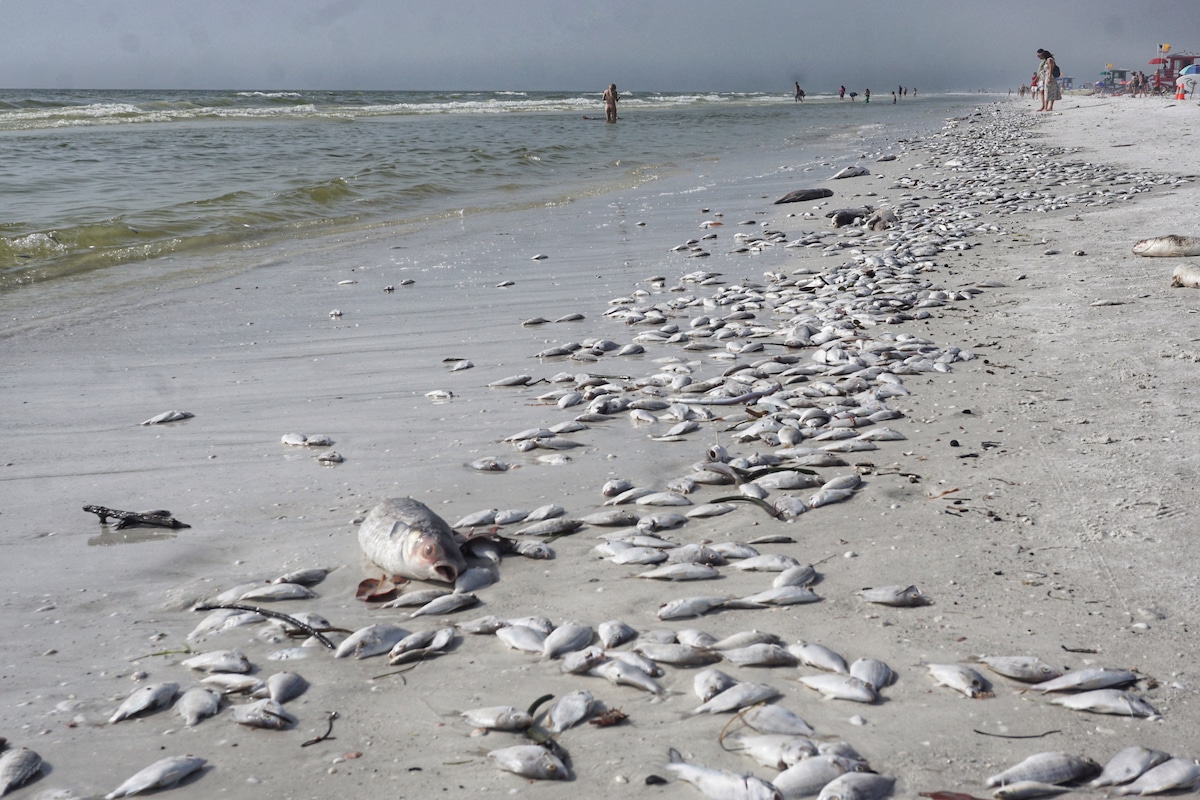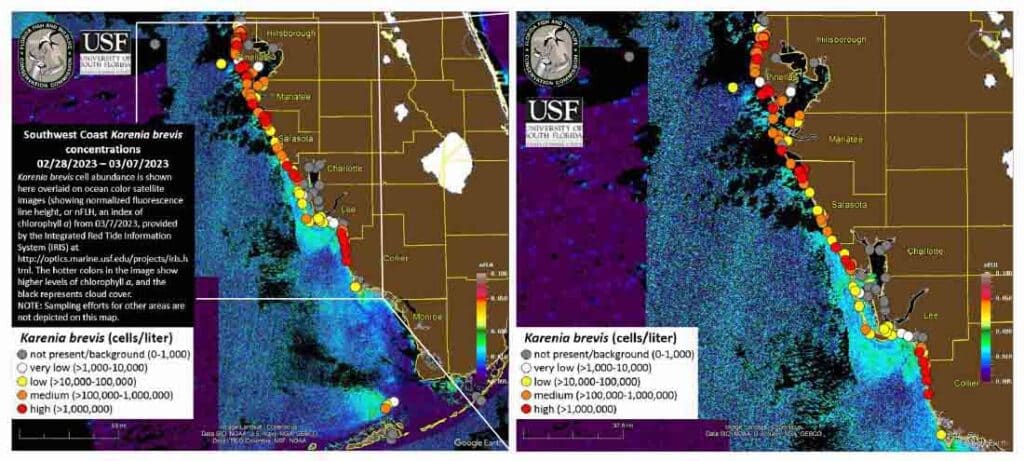Red Tide Returns to Florida Beaches Earlier and Stronger Than Normal

 Why you can trust us
Why you can trust us
Founded in 2005 as an Ohio-based environmental newspaper, EcoWatch is a digital platform dedicated to publishing quality, science-based content on environmental issues, causes, and solutions.
The phenomenon known as red tide — caused by large amounts of the toxic algae Karenia brevis — has come earlier than usual to Florida this year, and in concentrations that are higher than normal.
The harmful algae produce brevetoxins that can kill marine life and pose health problems for humans, reported BBC News.
The algae form in offshore waters, following nutrients that move from the bottom of the ocean toward the shore, where they collect.
“They just accumulate there, and then they grow on whatever nutrients they can find,” said oceanographer with the National Oceanic and Atmospheric Administration Richard Stumpf, as The Washington Post reported. “They’re really good at scavenging the limited nutrients in the water.”
Red tide has been around since the 1800s and typically plagues parts of Florida and Texas in the summer and fall, reported BBC News.
The Florida Fish and Wildlife Conservation Commission (FWC) said it found the algae in 115 samples along the west coast of Florida last week. Medium to high concentrations of the organisms were found in 56 of the samples.
A FWC red tide map shows current levels of the phenomenon in Florida.

The toxins caused by the algae can cause particular problems for people with respiratory issues like asthma. The toxins can also accumulate in shellfish and cause Neurotoxic Shellfish Poisoning, NPR reported.
The toxins can be fatal to seabirds that feed on fish that have been exposed to the organisms, and have also been known to kill dolphins, manatees and sea turtles.
Due to the possibility of the algae causing rashes and irritating the skin and eyes, the FWC has warned people not to go swimming in or around waters affected by red tide.
According to Stumpf, the algae live in the Gulf of Mexico and push in to settle offshore in the fall, reported The Washington Post. In a typical year, high-pressure and northerly winter winds in Florida push the algae back into the Gulf, where they stay there until the following year.
But this wasn’t a normal year.
“If you have a year where we don’t get those persistent northerly winds pushing it out it can hang around,” said Stumpf, as The Washington Post reported. “And that’s what’s happening this year.”
According to the U.S. Environmental Protection Agency, the warmer temperatures associated with climate change can cause destructive algae blooms to happen more frequently and with more intensity. Extreme weather can also lead to more runoff, which contains fertilizer nutrients that can enter waterways and make their way to the ocean, where they end up being food for the toxic algae.
Recently, air and water temperatures in Florida have been above normal, with Gulf Coast waters 5.4 to 10.8 degrees higher than average for this time of year.
Subscribe to get exclusive updates in our daily newsletter!
By signing up, you agree to the Terms of Use and Privacy Policy & to receive electronic communications from EcoWatch Media Group, which may include marketing promotions, advertisements and sponsored content.

 233k
233k  41k
41k  Subscribe
Subscribe 




